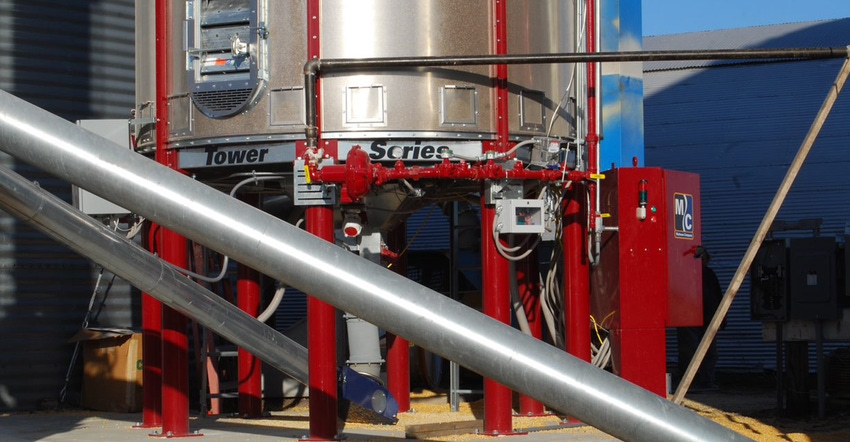August 12, 2019

With a wet spring and late-planted fields, corn is maturing later, leading to wet grain this fall. Long delays in soybean planting are also delaying maturity of that crop.
“It’s been more than a decade since we had to do major drying of our corn crop, which will put a big strain on grain drying and handling systems, especially if they haven’t been updated,” says Kris Kohl, Iowa State University Extension ag engineering specialist. “Late planting and late maturing of corn will also reduce the number of days available for it to dry down naturally in the field. We need to plan for a late, wet crop this fall.”
With the calendar moving further into August, “farmers need to be preparing for harvest,” he advises.
When will corn reach maturity?
Scouting fields and marking the silking date, and then adding 60 days will give you the date when corn will reach black layer stage. When a black layer forms in corn kernels, that’s when corn reaches maturity and is approximately 30% moisture content.
Cleaning out bins and turning on the fans to see how they are working prior to harvest is another step to take to be prepared. Also, check grain spreaders, stirrers and transfer augers to make sure everything is working properly. Lubricate bearings and make needed repairs before harvest. “Wet corn is always harder to start moving in a grain handling and drying system,” Kohl says.
Measure the space under all drying and storage bin floors to be sure there’s at least 7.5 inches of clear space for the air to spread out. If fines have filled the plenum space under drying floors, then it’s time to get them vacuumed out. “This is not a fun job, but it’s necessary,” he adds. “Don’t delay getting this done.”
Get educated on the performance of your individual grain bin and drying system. ISU has access to good computer programs, available online, providing fan performance measurements to help you determine the speed of drying, amount of electricity used and overall performance. The Iowa Grain Quality Initiative has information on handling and drying.
Soybean drying, storage
Normally, you don’t have to artificially dry soybeans for safe storage in bins. Soybeans usually come out of the field dry enough. But with delayed planting and later maturity this year, some beans will be harvested too wet to store without drying.
The optimum harvest moisture range is 13% to 15% for maximum weight and minimum field loss for soybeans, says Charles Hurburgh, director of the Iowa Grain Quality Initiative at ISU. When moisture is less than 10%, soybeans become brittle and are more likely to split during harvest and handling.
When moisture is too high, spoilage is likely, and germination can be reduced in just a few days. High oil content makes soybeans slightly more susceptible to spoilage than corn, so soybeans need to be about 2 points drier than corn for the same storage period.
For winter storage, store soybeans at 13% moisture or less, 12% or less for storage up to one year, and 11% or less for more than a year. Soybeans with less than 15% moisture can generally be dried with fans sized for routine aeration (0.1 to 0.2 cubic feet per minute per bushel).
For more information read Soybean Drying and Storage, PM1636 revised, from ISU.
About the Author(s)
You May Also Like






